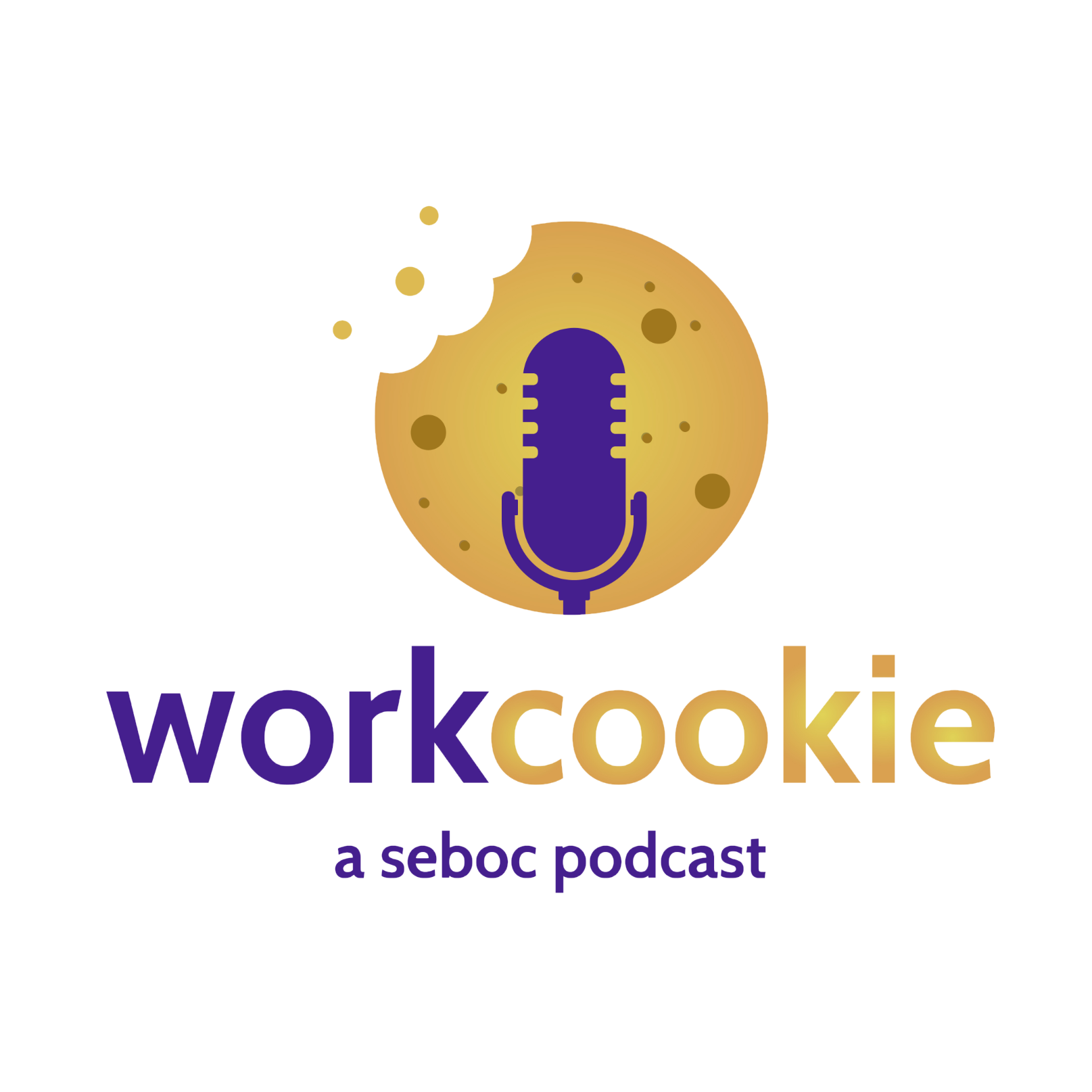

WorkCookie - Get Ahead with Industrial/Organizational Psychology in the Workplace
seboc.com - The Society of Evidence-Based Organizational Consulting
All about the workplace from Industrial/Organizational Psychologists and other experts in organization and human behavior science. SEBOC’s (The Society of Evidence-Based Organizational Consulting) premier podcast.
Episodes
Mentioned books

13 snips
Apr 28, 2025 • 1h 1min
Ep. 253 - The Expectation Dilemma: Balancing Organizational and Employee Needs
Lee Crowson, a voice and speech coach, and Nic Krueger, an organizational behavior expert, tackle the shifting expectations in today's workplaces. They discuss the tension between employee well-being and performance goals, advocating for a human-centric approach to leadership. The conversation delves into issues like quiet quitting, generational collaboration, and effective communication. Listeners are encouraged to embrace diverse perspectives and ethical leadership to foster a more engaged and sustainable work environment.

10 snips
Apr 21, 2025 • 60min
Ep. 252 - Human-Centric Leadership in the Age of AI
In this engaging discussion, Lee Crowson shares insights on AI's limitations, warning of potential dangers while drawing parallels to past tech booms. LindaAnn Rogers highlights the vital role of leadership in effectively integrating AI into organizations. Nic Krueger emphasizes the importance of human-centric leadership, especially in a capitalism that risks collateral damage. Together, they explore the balance between technological progress and employee well-being, urging leaders to prioritize human values in this rapidly evolving digital landscape.

17 snips
Apr 14, 2025 • 1h
Ep. 251 - WorkCookie at SIOP in Denver: I-O Psychology in Action
Join Lee Crowson, an organizational consulting expert, as he shares vital networking strategies gleaned from the SIOP conference. LindaAnn Rogers, an HR practices specialist, delves into effective hiring processes and tackling bias. Matthew Lampe, a leadership guru, discusses the importance of humility in boosting team motivation and fostering a positive culture. Together, they explore big themes like the impact of AI in I-O psychology and the necessity of resilience in navigating workplace changes.

25 snips
Apr 7, 2025 • 1h 5min
Ep. 250 - Delegating for Growth and Success
Joining the discussion is Dr. Amanda Shelton, a leadership development expert. She dives into the common pitfalls of delegation and how fear can hinder progress. Dr. Shelton emphasizes the importance of understanding team strengths and building trust for effective delegation. She also tackles the mental challenges leaders face when assigning tasks, highlighting how fostering a supportive culture can lead to growth. Tune in for practical strategies to enhance leadership through effective delegation and the long-term benefits it can bring!

7 snips
Mar 31, 2025 • 60min
Ep. 249 - Calm Amongst Chaos
Dr. Emi Barresi, an expert in industrial-organizational psychology, and Lee Crowson, an IO psychologist, dive into the chaos of workplace dynamics. They discuss the power of emotional intelligence in maintaining calm while navigating complex environments. Personal anecdotes illustrate the significance of meaningful interactions and the role of psychology in enhancing employee engagement. The duo also explores career advancement opportunities within the field and the intersection of psychology and marketing, emphasizing the importance of understanding human behavior in professional settings.

14 snips
Mar 24, 2025 • 60min
Ep. 248 - Toxic Workplaces, People, and Environments
Lee Crowson, a seasoned consultant with military experience, shares his personal encounters with toxic supervisors, underlining the significance of seeking help in such environments. Nic Krueger, a food service professional, discusses proactive strategies for mitigating toxicity in restaurants. They explore various forms of workplace toxicity, the importance of clear communication, and the need for psychological safety. Listeners are enlightened on tackling toxic leadership and fostering a healthier, more supportive workplace culture.

12 snips
Mar 17, 2025 • 60min
Ep. 247 - Modifying Behaviors within an Organization
Join Nic Krueger, an I/O psychology expert, and Lee Crowson, a seasoned professional in hiring practices, as they navigate the intricacies of modifying behaviors within organizations. They discuss innovative reward strategies to engage remote teams, emphasizing personalized incentives that resonate with employee motivations. The duo also critiques traditional hiring methods, stressing the importance of aligning recruitment with organizational culture. Lastly, they shine a light on the dangers of toxic workplace culture and the crucial need for open dialogue in addressing these issues.

10 snips
Mar 10, 2025 • 1h 6min
Ep. 246 - Workplace Arrogance
Nic Krueger, a sociologist specializing in workplace dynamics, and Manny, an expert in accountability, dive into the intriguing world of arrogance in leadership. They discuss the fine line between confidence and arrogance, shedding light on how both affect organizational culture. The conversation explores the unique struggles women face with workplace arrogance and emphasizes the importance of collaboration and humility. They also offer valuable strategies for individuals to confront toxic behaviors and advocate for themselves effectively in challenging environments.

Mar 3, 2025 • 60min
Ep. 245 - Company and Employee Performance Data Transparency
In this Episode: Dr. Jeremy Lucabaugh, Tom Bradshaw, LindaAnn Rogers, Lee Crowson, Emi Barresi, Alexander Abney-King
I/O Job Hunt Course: https://www.seboc.com/job
Visit us https://www.seboc.com/
Follow us on LinkedIn: https://bit.ly/sebocLI
Join an open-mic event: https://www.seboc.com/events

11 snips
Feb 24, 2025 • 1h
Ep. 244 - Would You Rather? Employee Passion vs. Leadership Level; Turnover vs. Engagement
Lee Crowson, a leadership expert, shares insights on adapting leadership styles to enhance team dynamics. Alexander Abney-King emphasizes how passionate leadership shapes company culture and drives innovation. The two discuss the critical balance between employee motivation and leadership effectiveness. They highlight the role of open communication in fostering team engagement and explore strategies to navigate employee turnover in various organizational settings. Their engaging conversation reveals the vital impact of passion and leadership on workplace success.


